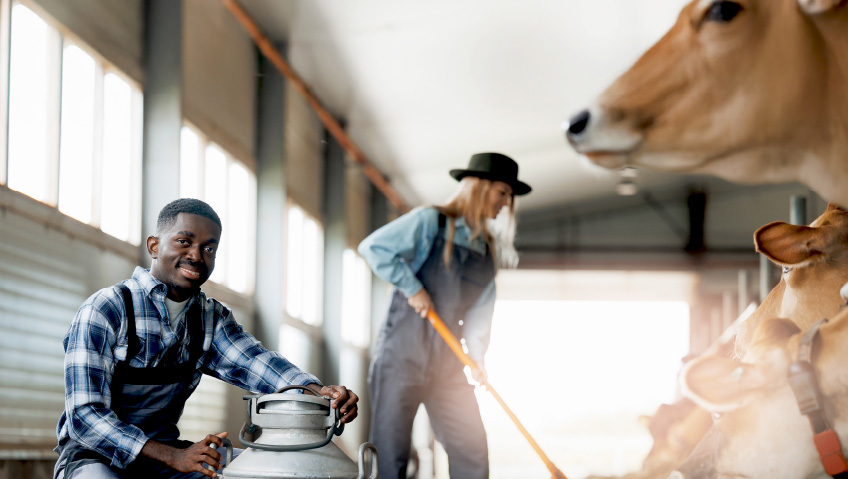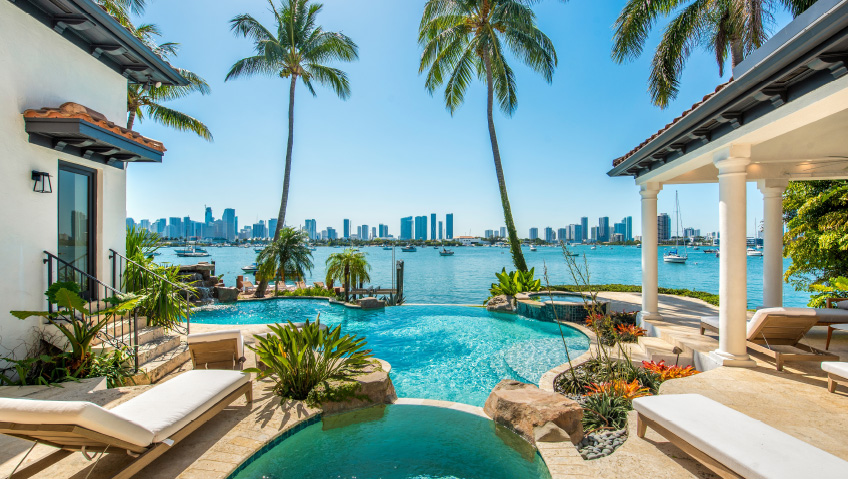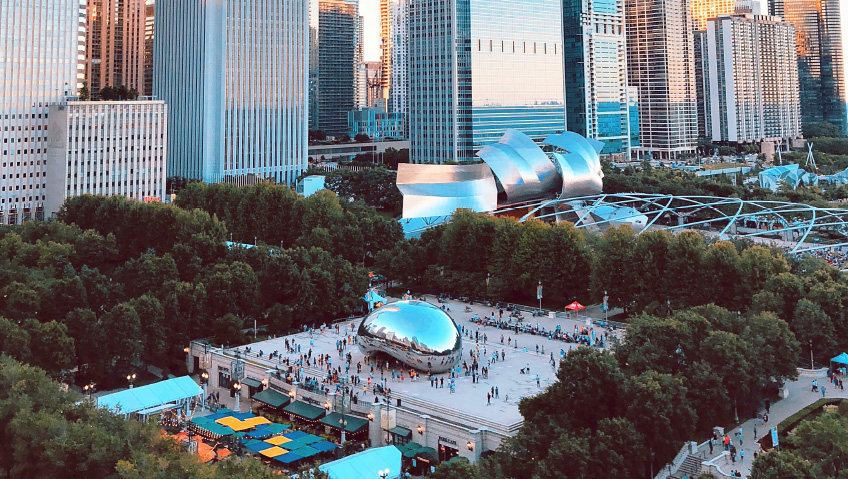Few cities in New England embody the story of immigration, resilience, and reinvention quite like Lawrence, Massachusetts. Founded in 1845 along the Merrimack River, Lawrence quickly became one of America’s leading industrial centers, built around its mighty textile mills. Immigrants from Ireland, Italy, Poland, Germany, and other parts of Europe came to work in the booming factories, creating a patchwork of cultures that defined the city for generations.
Lawrence was also the site of the historic Bread and Roses Strike of 1912, where immigrant mill workers, many of them women, stood together to demand fair wages and better working conditions. This landmark labor movement underscored the city’s legacy as a place where working people have long fought for dignity, equity, and opportunity.
Fast forward to today, and Lawrence continues to be a city of immigrants. But the demographics have shifted. Mayor Brian A. DePeña, who has been at the helm since 2021, tell us, “Lawrence has always been known as a city of immigrants, but today that diversity looks different. While our roots include Irish, Italian, Polish, and French families, we now have a strong Dominican, Puerto Rican, and Central American community. More recently, we’re welcoming Haitian, African, and Asian families too. Each group brings its own culture, and we’re proud to honor that history while building a shared future.”
This blend of cultures is more than a demographic statistic; it is the heartbeat of Lawrence, visible in its festivals, businesses, food, and daily life. And it’s a foundation that city leadership is determined to build upon as they shape the next chapter in Lawrence’s growth.
Lawrence is what Massachusetts calls a “Gateway City,” a smaller urban center with untapped potential for economic and community growth. Its location, affordability, and transit access make it an attractive option for families and businesses alike.
Octavien Spanner, Senior Advisor, points out that affordability is a major advantage. Compared to Boston, Somerville, or Cambridge, Lawrence offers lower housing costs and more affordable rentals while still being connected to Greater Boston by rail and highway. “People who come here can find housing that fits their budget without sacrificing access to jobs or quality of life,” he says.
This balance of affordability and accessibility has helped Lawrence attract new residents, particularly immigrant families looking for opportunity and stability.
Culture is woven into the very fabric of Lawrence, and nowhere is that more evident than in the city’s vibrant calendar of festivals. Each year, residents come together to honor their heritage, strengthen community bonds, and support local businesses through a series of large-scale celebrations. Longstanding traditions like the Feast of the Three Saints pay tribute to the city’s Italian roots, while Semana Hispana, or Hispanic Week, highlights the richness and diversity of Latino culture. The Puerto Rican Movement Festival adds another layer of identity and pride, showcasing the contributions and traditions of Lawrence’s Puerto Rican community.
Most recently, Mayor DePeña introduced the Sea Festival, a family-centered summer gathering that not only provided entertainment for residents but also brought renewed energy to downtown. By featuring local restaurants and retailers, the festival offered a chance for businesses to shine while giving families a reason to explore and enjoy their own city.
Andrea McCann, Enforcement Officer for the city, emphasizes the role these events play in Lawrence’s broader identity. She notes that they are more than cultural showcases; they are opportunities for residents to rediscover downtown as a lively place to eat, shop, and gather while reinforcing the city’s reputation as a place where diverse cultures thrive side by side.
If festivals represent Lawrence’s spirit, redevelopment represents its future. At the heart of Mayor DePeña’s vision is a plan to transform underutilized areas of the city into vibrant hubs of housing, retail, and community life.
Working through the Lawrence Redevelopment Authority (LRA), the city identified eight key downtown properties for redevelopment. Developers were invited to submit letters of interest and formal proposals, leading to 20 serious bids. After a public process that included citizen input, eight projects were selected.
“Most of the projects are mixed-use, housing combined with retail and commercial space. The goal is to keep residents shopping and dining here in Lawrence, rather than going to neighboring communities. That’s how we retain wealth, create new opportunities, and strengthen our city.” This emphasis on “live, work, play” development is designed to make Lawrence a more self-sustaining community where prosperity is shared equitably.
Spanner underscores the importance of inclusivity: “The Mayor’s vision is rooted in equitable prosperity. Every project we pursue is designed to uplift residents, not just bring in outside investment.”
One of Lawrence’s quiet strengths lies in its abundance of green space. Though the city spans just 6.7 square miles, it boasts more tree coverage and urban parkland than many other communities of its size in Massachusetts. This natural advantage is something city leaders are determined to protect and enhance as Lawrence continues to grow.
Recent years have brought a series of strategic investments aimed at making the city more environmentally sustainable. A $700,000 initiative is underway to clean the Spicket River, a 3.5-mile stretch that winds through Lawrence and has long been a defining feature of the local landscape. New schools and even the police station have been built as “smart” structures, designed with energy efficiency in mind. At the same time, the city is preparing for the future by exploring the installation of electric vehicle charging stations in all new development projects.
Perhaps most ambitious of all is a $142 million proposal submitted under the state’s Environmental Bond Bill. This wide-ranging plan includes upgrades to water and sewer infrastructure, improvements to the city’s reservoir, and even the thoughtful expansion of cemetery space, acknowledging both the needs of a growing population and the role cemeteries play as large, green landscapes within the city.
As Spanner puts it, “We’re not just growing economically; we’re making sure our growth is sustainable. Lawrence has the chance to be a model for green urban living in Massachusetts.”
The city’s vision for growth is closely tied to the health and education of its residents. Lawrence is home to two hospitals, Lawrence General Hospital, a designated trauma center, and Holy Family Hospital, which also serves nearby communities. Both have partnerships with leading institutions in Boston, including Mass General and Brigham and Women’s Hospital.
On the education front, Lawrence has expanded capacity with two new schools, increasing student enrollment opportunities from 300 to 1,200. This year, the city will celebrate its largest-ever graduating class from Lawrence High School, an important milestone for a city focused on upward mobility.
Infrastructure investment has been another cornerstone of Mayor DePeña’s administration. In just one year, the city repaired 72 streets and made significant upgrades to its water and sewer systems. These improvements not only support redevelopment but also strengthen public confidence in Lawrence’s future.
Public safety is also at the center of the Mayor’s agenda. “You can’t promote a city if people don’t feel safe,” Spanner explains. Crime rates have declined, and the administration has worked closely with the police department and community organizations to ensure that residents feel secure.
One of the biggest drivers of Lawrence’s progress has been its ability to secure funding and build partnerships across all levels of government. Since Mayor DePeña took office, the city has brought in $463 million in funding, including $163 million in grants. These funds support redevelopment, infrastructure, and environmental projects.
Partnerships with Governor Maura Healey, Senators Ed Markey and Elizabeth Warren, and Congresswoman Lori Trahan have been instrumental in advancing Lawrence’s priorities. As McCann notes, these partnerships have elevated Lawrence’s status in Massachusetts: “For too long, other cities like Lowell, Haverhill, and Somerville surged ahead while Lawrence was left behind. This administration is determined to change that. The Mayor often says, ‘Why not Lawrence?’ and now we’re proving that Lawrence can lead.”
Beyond physical improvements, Lawrence has also made strides in financial management. For four consecutive years, the city has received outstanding audit reports. Its Standard & Poor’s credit rating has risen to A+ stable, a reflection of strong fiscal stewardship. These achievements may not generate the same excitement as a new festival or redevelopment project, but they are essential for attracting investment and ensuring long-term stability.
In many ways, Lawrence is returning to its roots. It is once again a city defined by immigrants, industry, and resilience. But this time, the focus is on inclusivity, sustainability, and equity. The administration’s combined efforts in redevelopment, infrastructure, environmental sustainability, education, healthcare, and public safety are laying the groundwork for a brighter future.
As Spanner reflects, the work is about more than just physical projects: “We’re building a Lawrence where residents don’t just live but thrive. A city where every community, every culture, and every generation feels invested in the future.”
Taken together, these initiatives reflect a city that is moving with purpose. Lawrence is proving that revitalization is about more than economic metrics; it is about creating a community where opportunity, sustainability, and quality of life come together. With bold investments, a focus on inclusivity, and a vision for the future, Lawrence is showing what is possible when a city embraces both its history and its potential.






